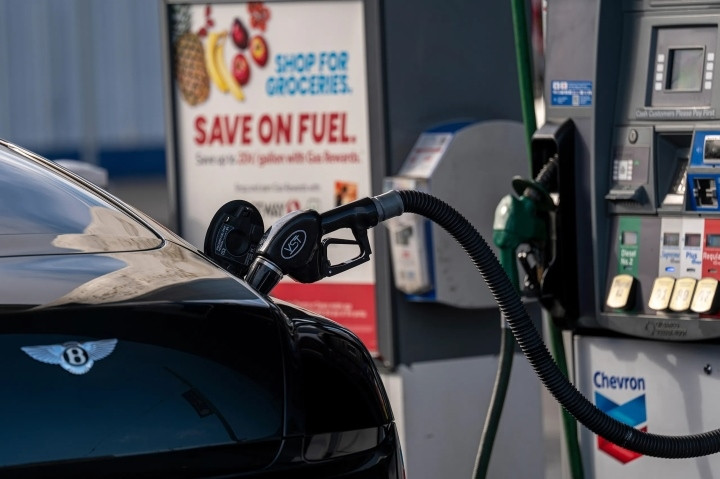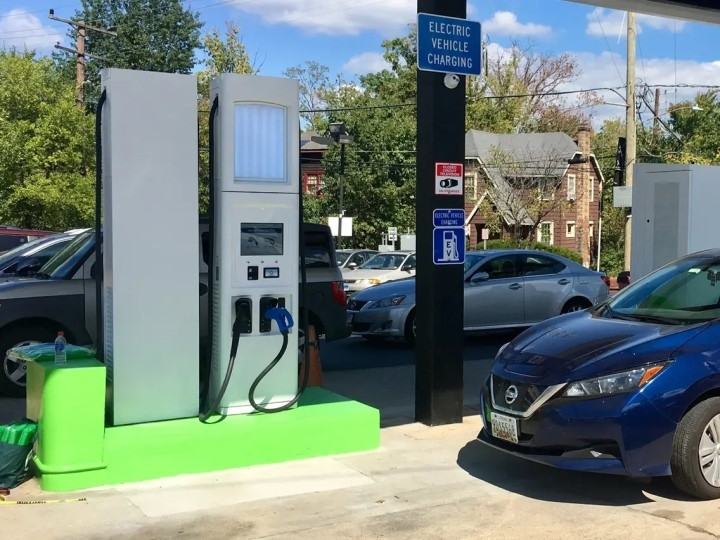It seems like a simple task, but for experienced drivers, where and how to fill up gas is very important.
How to avoid being "pickpocketed" while also avoiding wasting money and damaging the car when filling up gas is a matter of concern for many drivers.
Here are some tips for filling up your car with gas to avoid wasting money, as summarized by experienced drivers.
Limit filling the tank
Filling up your gas tank will cause your car to use more fuel, causing more damage to your car than filling it up to almost full. In addition, filling up your gas tank in many cases also allows gas station employees to "cheat" money in a reasonable way.

Many drivers advise against filling up the gas tank.
The reason is to ensure safety, the gas pumps always have a reverse suction mechanism of the pump trigger to avoid spilling gas. At that time, the gas has passed through the meter and the customer still has to pay for the gas that is sucked back. Therefore, you should calculate the amount of gas to fill up to the correct capacity. You should not buy a full tank of gas, which is easy to lose and makes the vehicle have to "carry" more weight, causing fuel waste.
Limit gas by money
Many people have the habit of filling up their gas tanks in even amounts such as 100,000 VND, 500,000 VND or 1 million VND for convenience. However, this way of buying will facilitate fraudulent behavior at some gas stations, because the programs to "deceive" customers on gas pumps are often programmed according to the amount of money.
To avoid being “pickpocketed” when filling up gas, many drivers advise buying by capacity such as 10 liters, 20 liters... depending on the vehicle's gas tank. Then, the pump will pump the correct amount of gas in liters because this capacity has been regularly inspected and the ratio is almost absolutely accurate.
You should fill up gas when it's cool.
According to experts, drivers should fill up their gas tanks in the morning and evening, and avoid filling up at noon. The reason is that gas expands with temperature. The higher the temperature, the more gas expands and vice versa.

Avoid filling up with gas in the middle of the day.
Therefore, it is more beneficial to fill up gas when it is cool. Although the difference is not large, it is worth trying.
Requires the gauge to "0" before pumping.
Although there is a regulation that the meter must return to “0” before filling up, some employees do not comply and fill up multiple customers at once. This makes it difficult to monitor and calculate the actual amount of fuel pumped.
Furthermore, this often has errors between pumping times, so the customer may be the one to suffer. Therefore, ask the staff to return the meter to “0” before pumping.
Always watch the gauge carefully when pumping gas.
If you are not careful, the gas station attendant may under-pump the gas. Therefore, while pumping gas, the buyer should constantly monitor the gas station meter. This will help you promptly detect any signs of fraud.
Fill with the correct type of gasoline
Each car will have a different type of gasoline. Therefore, filling the right type of gasoline for the car has a significant energy saving effect. If the wrong type is filled, the gasoline will not burn completely but will create residue in the car, causing the car to waste more power and consume more gasoline.
Choose a reputable gas station
Buyers should fill up at familiar and reputable gas stations. These locations often have guaranteed fuel quality, standard measuring systems, a fuel pumping process, and clearly displayed prices on LED or LCD screens on the gas pumps.
Don't wait for the fuel needle to point to the red line before filling up.
To prolong the life of your car, do not wait until the fuel gauge reaches the red line before filling up. Some engines are designed to run with a constant supply of fuel. Therefore, running out of fuel can easily allow air to enter, causing damage.
By Family